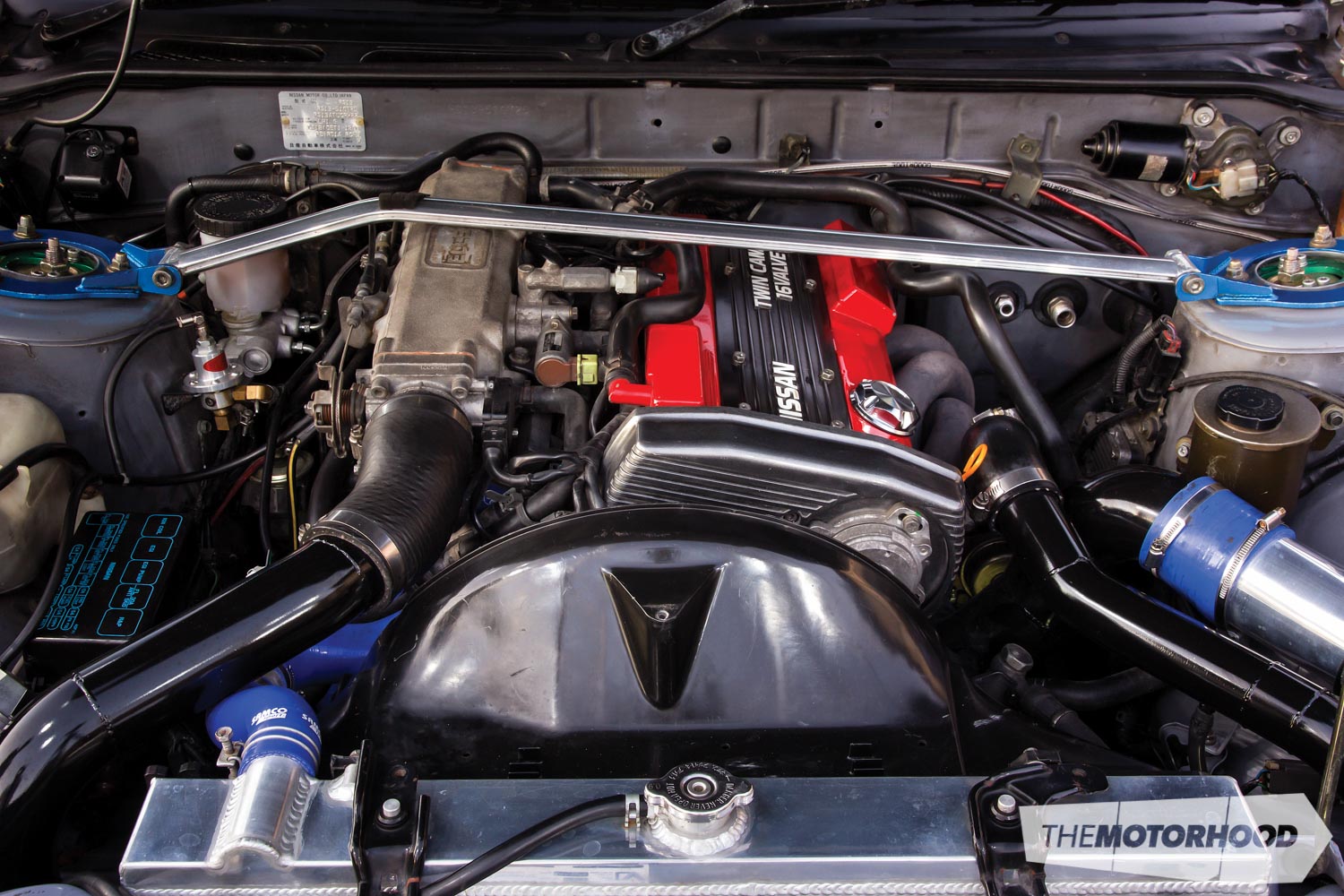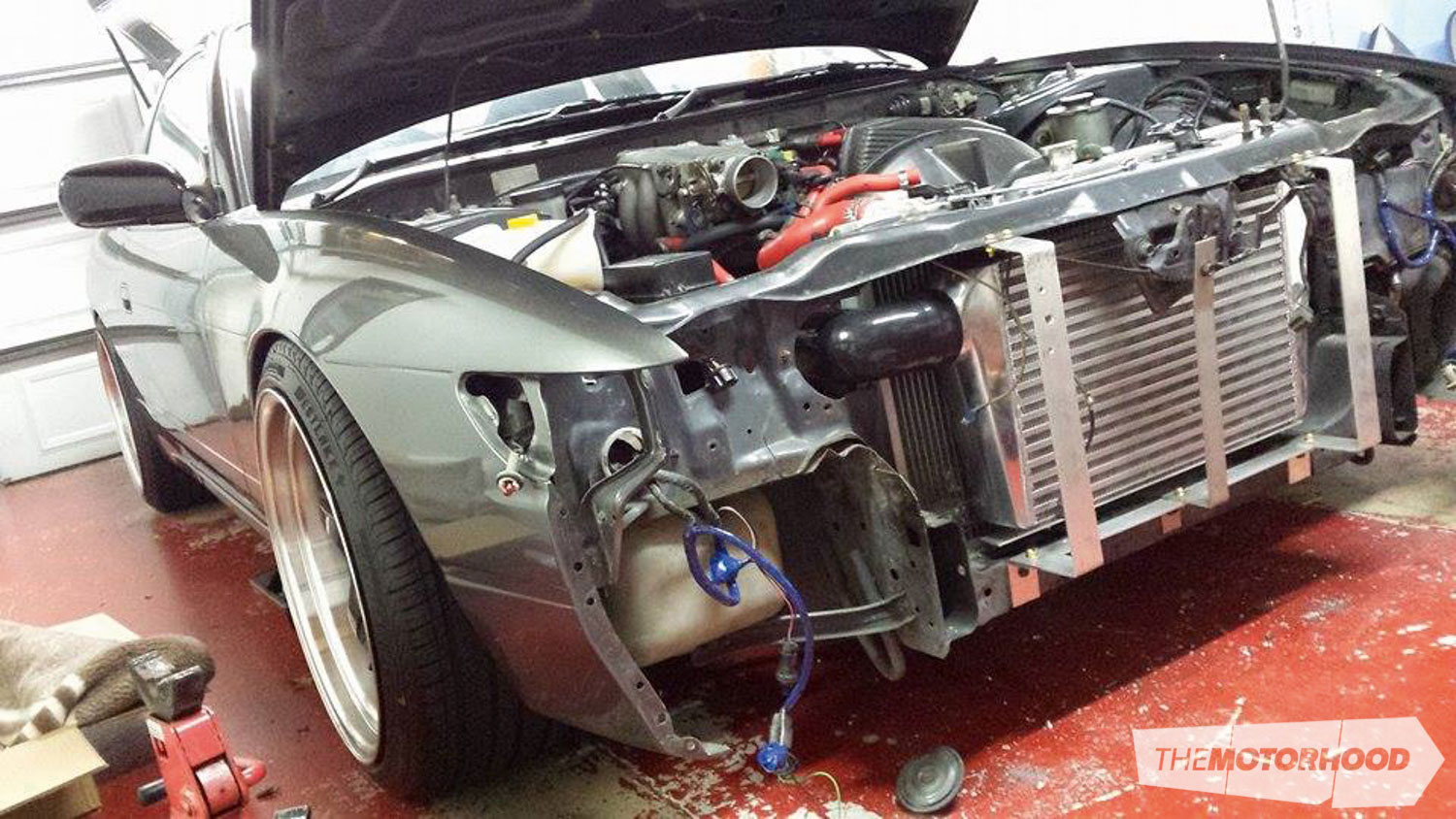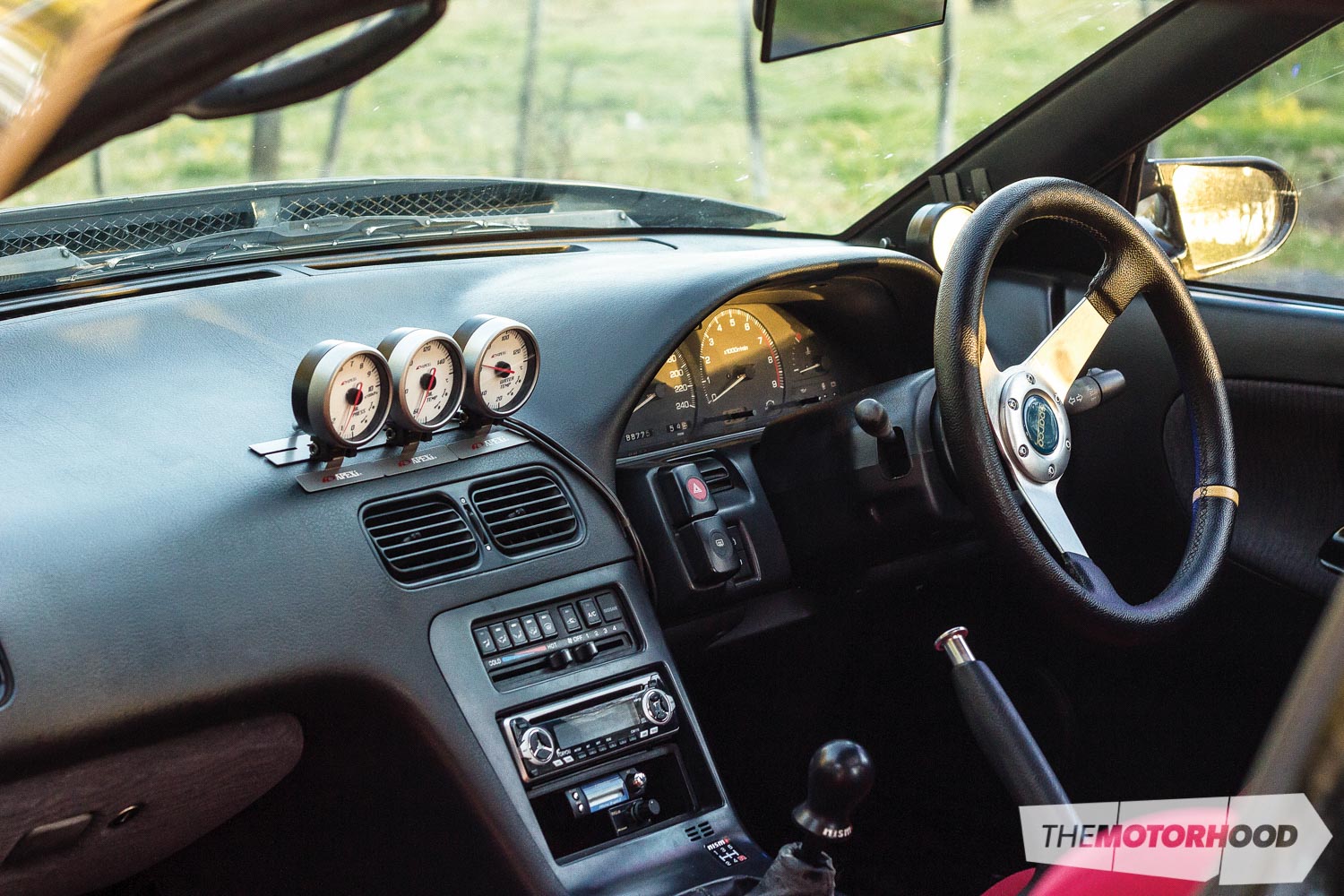Previously in NZ Performance Car, Scrapyard Gains has covered two very popular cheap project cars — the Honda Integra DC2 and the Subaru WRX GC8. But we know all the s-chassis fans have been hanging out for a scrapyard feature of their own, and it’s no secret Nissan produced a super-popular, budget-friendly readily available platform. The Nissan Silvia S13, 180SX and even the New Zealand–new 200SX all share the same engine and chassis, the latter having been one of the most popular drifting chassis since its debut in the early ’90s. So in this month’s Scrapyard Gains we will cover the Nissan Silvia Q’s version of it, the CA18DET.

Engine
Compared to the larger SR20DET available in the K’s model, the CA18DET doesn’t put out anywhere near the numbers, but it does have similar potential. The main reason for this is the smaller displacement, and the T25 turbo the CA engine comes from the factory with. The combo means 220kW at the wheels is easily achieved, which puts you at the limits of the factory internals. To reach that 200kW-plus goal, we first need to do the usual supporting modifications — intake, exhaust and cooling.
Most performance shops stock three-inch turbo-back exhaust systems for this chassis for very reasonable coin, which alongside a free-flowing pod filter and front-mounted intercooler should set us up nicely. The very common T2 flange on the stock manifold leaves us with plenty of options for turbochargers. From smallest to largest, the W11 Avenir came with a ball-bearing T25 which is great for 170kW, the Silvia S14 came with a journal-bearing T28, the Pulsar GTI-R had a larger T28, but was still journal bearing. The JDM Silvia Spec R was released with the highest-flowing ball-bearing T28 available, which will easily flow 220kW. We have seen the ball-bearing T28, also known as the GT28R, sell for around $500, which is great value.
Once you have everything installed, you will need to find a Z32 airflow meter, as the stock item won’t allow us to run anything over 140kW. A fuel upgrade to get this kind of power is essential, and you’ll find 510cc injectors out of an Evo III — or the 440cc RB26DETT injectors — are a direct replacement and shouldn’t set you back more than $400. Don’t forget about your fuel pump either, a replacement Walbro in-tank unit will be more than sufficient.
You may have noticed we haven’t mentioned an ECU upgrade yet, so here it is. We could recommend a stand-alone ECU like the A’PEXi Power FC or a Link G4, but that’s not what Scrapyard Gains is all about. The factory ECU, with a new EPROM, is tuneable and very affordable. Companies like Nistune in Australia offer the complete package, including the tuning software and EPROM. Once you have all your modifications installed and the new EPROM in, you are ready for a tune. We recommend a reputable tuner, although if you have the know-how, there are plenty of instructions online. Once the car’s tuned, you should be making around 200kW–220kW depending on what octane of fuel you have locally, and boost pressure.

Driveline and suspension/handling
The multi-link suspension featured in this model of Silvia had only previously been used in Nissan’s concept cars, such as the MID 4. It was so advanced that to this day the chassis remains extremely competitive in all aspects of motorsport. The car weighs in at a measly 1225kg, and with its nimble chassis is an incredible performer. Adjustable arms, coilover suspension and braces can be found online with ease.
One of the best bang-for-buck upgrades is the Nissan Skyline GTR R32 rear sway bar, which is a direct bolt-on. The GTR rear sway bar is 24mm thick and semi hollow, compared to the factory 17mm semi-hollow item. Nissan’s four-wheel steering set-up, known as HICAS, can be handy on an unmodified road car, but on a track car it may make an uneasy companion when the back steps out.
To remove the HICAS system properly, a Nissan Laurel C33 or Nissan Cefiro A31 rear subframe is what you need, or you can go the cheaper route and opt for a HICAS lock bar, which mechanically prevents the four-wheel steering componentry from moving. To further improve handling, Cusco bolt-in roll cages are known to frequently appear on forums and online sale websites. Coilovers are the best bang for your buck with this model, however, if you don’t want to go down the tedious and sometimes expensive cert process route, we would recommend a set of quality Bilsteins with an uprated lowering-spring set.
The stock brakes are very small, and being four-stud items, wheel options are limited. Five-stud S14 or S15 hubs combined with Skyline 282mm rotors and R32 four-pot calipers sort out the front-end upgrade. For the rear, the best upgrade is the R33 GTS25T two-pot calipers and rotors, but you will need to find R33 handbrake cables in order for them to work.
One thing most people seem to forget when modifying a car is the quality of their tyres, why spend thousands on handling upgrades, then buy crappy ones? Food for thought.

Exterior/Interior aesthetics
Everyone by now should be familiar with the vast number of bodykits available for the S13 and 180SX. If we were to go through every available option we might need an entire article dedicated to the topic. For the early 180SX and 200SX, the sought-after lip kit is the Type X, which was available on the later-model 180SX, but these kits are getting hard to find now and Japan is the easiest option.
The later-model 180SX Type X seats are a nice addition, or R32 GTR seats if you really want some more side support. To make the GTR seats fit, you must extend the rear bolt hole closest to the door with a bracket, or modify the existing mount on the seat. Silvia S15 carpet is a direct fit, and hugely improves the overall feel and cleanliness of the old S13 carpet, which by now has probably done its dash. Not having an airbag is great on these older cars, the world is your oyster for steering wheel choice, however, you can’t beat the feel of a Nardi.
Results
Now that you’ve built yourself a lightweight, powerful, big-braked monster it’s time to hit the circuit, or whatever you modded the car for. Silvias are among the most-fun coupés to come out of the early ’90s, and they will be for years to come.
Ensure your Silvia is healthy and safe before you carry out any of the above modifications. Pushing over 200kW out of the old CA18DET is asking a lot, so you will want to give the engine a once-over before the upgrades begin. Ensuring the upgrades are OEM or genuine parts in Scrapyard Gains lets us sleep at night. If you upgrade anything that the OEM can’t supply, make sure it is of good quality.




